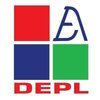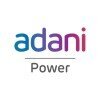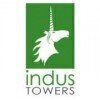Operation & Maintenance Engineer
60+ Operation & Maintenance Engineer Interview Questions and Answers

Asked in Aravali Power Company

Q. Why do we perform oil tests, and what parameters are checked during these tests?
Oil tests are done to ensure the health of the equipment and detect any potential issues.
Oil tests check for contaminants, viscosity, acidity, and oxidation levels.
They help identify potential equipment failures before they occur.
Regular oil testing can extend the life of equipment and reduce maintenance costs.
Examples of oil tests include wear metal analysis, particle counting, and flash point testing.

Asked in Aravali Power Company

Q. What are the safety interlocks in your system and how do you ensure they are working?
Safety interlocks are mechanisms that prevent unsafe conditions. We ensure their functionality through regular testing and maintenance.
Safety interlocks are installed in critical areas of the system to prevent accidents and equipment damage.
Examples of safety interlocks include emergency stop buttons, pressure relief valves, and temperature sensors.
Regular testing and maintenance of safety interlocks ensure their proper functionality.
We also conduct safety audits to identify ...read more
Operation & Maintenance Engineer Interview Questions and Answers for Freshers

Asked in Dinesh Engineers

Q. How to manage any fault in mttr and what is locating how to do it
To manage faults in MTTR, identify the fault location and take appropriate actions to resolve it.
Analyze the fault to determine its root cause
Use diagnostic tools and techniques to locate the fault
Implement corrective actions to resolve the fault
Monitor the system to ensure the fault has been successfully resolved
Document the fault, actions taken, and any preventive measures for future reference

Asked in Dinesh Engineers

Q. How would you manage a public issue if it occurred while you were working?
To manage any public issue while working, it is important to prioritize safety, communicate effectively, and seek assistance if needed.
Ensure personal safety and the safety of others
Follow established protocols and procedures
Communicate the issue to relevant authorities or supervisors
Assess the severity of the issue and take appropriate action
Seek assistance from colleagues or emergency services if necessary
Document the incident for future reference and improvement

Asked in Vision India Services

Q. What were your responsibilities at Rajasthan Transformer and Power Company?
I worked as an Operation and Maintenance Engineer at Rajasthan Transformer and Power Company.
Managed the operation and maintenance of transformers and power equipment.
Performed regular inspections and maintenance activities to ensure smooth functioning of the equipment.
Troubleshooted and resolved any technical issues or faults in the transformers.
Implemented preventive maintenance strategies to minimize downtime and maximize efficiency.
Collaborated with a team of engineers an...read more

Q. What are the safety requirements for highway maintenance?
Safety requirements in highway maintenance include proper signage, traffic control, personal protective equipment, and equipment maintenance.
Proper signage to warn drivers of work zones and potential hazards
Traffic control measures to direct traffic safely around work zones
Personal protective equipment for workers, such as hard hats, high visibility clothing, and safety glasses
Equipment maintenance to ensure safe and reliable operation
Regular safety training for workers to pr...read more
Operation & Maintenance Engineer Jobs



Q. What procedures are adapted to maintain the highway?
Highway maintenance procedures include regular inspections, repairs, and cleaning.
Regular inspections to identify any damage or wear and tear
Repairs to fix any issues found during inspections
Cleaning to remove debris and maintain visibility
Snow and ice removal during winter months
Pothole filling and crack sealing to prevent further damage
Vegetation control to prevent overgrowth and maintain visibility
Signage maintenance to ensure clear and accurate information for drivers

Asked in JBM Group

Q. What is transformer and types of transformer
A transformer is an electrical device that transfers electrical energy between two or more circuits through electromagnetic induction.
Transformers are used to increase or decrease the voltage levels in electrical power systems.
They consist of two or more coils of wire, known as windings, which are wound around a core made of magnetic material.
The primary winding receives electrical energy from the input circuit and produces a magnetic field.
The magnetic field then induces a v...read more
Share interview questions and help millions of jobseekers 🌟


Asked in Vision India Services

Q. What tests are performed on transformers?
Various tests are performed in transformers to ensure their proper functioning and safety.
Insulation resistance test
Turns ratio test
Winding resistance test
Short circuit test
Open circuit test
Dielectric strength test
Oil quality test
Temperature rise test

Asked in JBM Group

Q. What is relay and difference between relay nad fuse?
A relay is an electrically operated switch that opens or closes circuits. A fuse is a protective device that melts when current exceeds a certain level.
Relays are used to control high voltage circuits with low voltage signals.
Fuses are used to protect circuits from overloading and short circuits.
Relays can be used to switch AC or DC circuits.
Fuses are one-time use and need to be replaced after they melt.
Relays have moving parts while fuses do not.

Asked in Frick India

Q. What are the different types of valves used in a plant?
Valves control fluid flow in plants, ensuring safety and efficiency in operations.
Gate Valve: Used for on/off control, minimal pressure drop (e.g., water supply systems).
Globe Valve: Provides good throttling capability (e.g., steam control).
Ball Valve: Offers quick shut-off, ideal for gas and liquid applications (e.g., natural gas pipelines).
Butterfly Valve: Lightweight, used for large volume flow control (e.g., HVAC systems).
Check Valve: Prevents backflow in piping systems (...read more

Asked in Tata Steel

Q. How do you identify phase sequence in R, Y, B?
Phase sequence in R, Y, B can be identified using a phase sequence indicator or a multimeter.
Use a phase sequence indicator to determine the correct sequence of R, Y, B phases.
Connect the phase sequence indicator to the three phases and observe the direction of rotation of the indicator to identify the sequence.
Alternatively, use a multimeter to measure the voltage between each pair of phases and determine the correct sequence based on the increasing voltage readings.

Asked in Dinesh Engineers

Q. How do you manage faults and teams?
To manage faults and teams, it is important to have a systematic approach and effective communication.
Identify and prioritize faults based on their impact and urgency
Assign tasks to team members based on their skills and expertise
Establish clear communication channels to report and resolve faults
Regularly monitor and track the progress of fault resolution
Provide necessary resources and support to the team
Encourage collaboration and teamwork
Document and analyze faults to ident...read more

Asked in Cube Highways

Q. what is the RFID what is the laser what is the axle sensor what is the ICD 2.5 Tell about your experience
RFID is a technology that uses radio waves to identify objects or people. Laser is a device that emits light through a process of optical amplification. Axle sensor is a device that detects the position or movement of an axle. ICD 2.5 is a type of integrated circuit debugger.
RFID uses radio waves for identification, commonly used in access control systems and inventory management.
Laser emits light through optical amplification, used in various applications such as barcode sca...read more

Asked in Enviri

Q. What safety precautions should be taken when working on machinery?
Safety precautions while working on machines include wearing appropriate personal protective equipment, following lockout/tagout procedures, and conducting regular maintenance checks.
Wear appropriate personal protective equipment (PPE) such as safety goggles, gloves, and hard hats.
Follow lockout/tagout procedures to ensure machines are properly shut off and isolated from energy sources before performing maintenance.
Conduct regular maintenance checks to identify and address an...read more

Asked in Reliance Communications

Q. What is broadband. What is protocol testing
Broadband refers to high-speed internet access. Protocol testing is the process of verifying if a communication protocol is working correctly.
Broadband is a type of internet connection that provides high-speed data transmission.
It allows for faster download and upload speeds compared to traditional dial-up connections.
Protocol testing involves checking if a communication protocol is functioning as intended.
This includes verifying if data is being transmitted and received corr...read more

Asked in Dinesh Engineers

Q. Are you able to perform splicing?
Yes, I have experience in splicing, which involves joining two pieces of material, often in cables or fibers, for efficient operation.
Splicing is commonly used in fiber optic cables to ensure minimal signal loss.
In electrical engineering, splicing wires can involve techniques like soldering or using connectors.
For example, in telecommunications, splicing helps maintain signal integrity over long distances.

Asked in Mahindra Teqo

Q. Describe a solar inverter fault you have resolved.
I resolved a fault in a solar inverter that caused intermittent shutdowns, ensuring optimal performance and reliability.
Identified a faulty capacitor in the inverter that was causing voltage fluctuations.
Replaced the damaged components and recalibrated the inverter settings.
Implemented regular maintenance checks to prevent future issues.
Monitored performance post-repair to ensure stability and efficiency.

Asked in BinBak Automations

Q. Tell us about cyber security standards.
Cyber security standards are guidelines and best practices for protecting information and systems from cyber threats.
Cyber security standards help organizations establish a baseline for security measures
Examples of cyber security standards include ISO 27001, NIST Cybersecurity Framework, and PCI DSS
Compliance with cyber security standards can help prevent data breaches and cyber attacks

Asked in JBM Group

Q. What is mcb and advatage and dis advantage?
MCB stands for Miniature Circuit Breaker. It is an electrical switch that automatically trips to protect an electrical circuit from damage.
Advantages of MCB: Quick response time, easy to install, compact size, high breaking capacity, and can be reset easily.
Disadvantages of MCB: Limited short circuit capacity, can be affected by temperature changes, and can be expensive compared to fuses.
MCBs are commonly used in residential and commercial buildings to protect electrical circ...read more
Asked in Devaditya Technocrats

Q. how to work tms ,what is tms,what is atms ,
TMS stands for Traffic Management System, used for controlling traffic flow. ATMS is Advanced Traffic Management System, a more advanced version.
TMS is used to monitor and control traffic flow on roads and highways.
ATMS is a more advanced system that integrates various technologies to manage traffic more efficiently.
TMS can include features like traffic signal control, CCTV cameras, and variable message signs.
ATMS may include predictive traffic modeling, adaptive signal contr...read more

Asked in Enviri

Q. How do you change a hydraulic cylinder piston seal?
To change a hydraulic cylinder piston seal, follow these steps:
Drain the hydraulic fluid from the cylinder
Remove the cylinder from the equipment
Disassemble the cylinder to access the piston seal
Remove the old seal using appropriate tools
Clean the seal groove and piston surface
Install the new seal, ensuring proper orientation
Reassemble the cylinder
Refill the hydraulic fluid
Test the cylinder for proper operation
Asked in Bhushan Steel & Strips

Q. If a motor suddenly stops, what steps will you take to resolve the issue?
I will check for any visible faults and then proceed with troubleshooting.
Check for any visible faults like loose connections, blown fuses, or tripped circuit breakers.
If there are no visible faults, use a multimeter to check for continuity and resistance.
Check the motor's bearings and lubrication.
If necessary, replace any faulty components or call for technical support.
After fixing the issue, test the motor to ensure it is running smoothly.

Asked in Enviri

Q. Why is scheduled maintenance required for machines?
Scheduled maintenance is required for machines to ensure optimal performance and prevent breakdowns.
Scheduled maintenance helps identify and address potential issues before they become major problems.
Regular maintenance reduces the risk of unexpected breakdowns and costly repairs.
Maintenance activities such as lubrication, cleaning, and calibration help machines operate at peak efficiency.
Scheduled maintenance can extend the lifespan of machines and equipment.
Maintenance also...read more

Q. What area does each machine cover?
The area covered by each machine depends on the type and size of the machine.
The area covered by a lawn mower is typically smaller than that of a tractor.
The size of the cutting deck or blade width can also affect the area covered.
Factors such as terrain, obstacles, and speed can also impact the area covered by a machine.
It is important to consider the area to be covered when selecting the appropriate machine for a job.
Asked in Devaditya Technocrats

Q. What are ATMS and TMS devices, and can you briefly explain them?
ATMS&TMS devices are used in transportation systems for traffic management and control.
ATMS stands for Advanced Traffic Management System
TMS stands for Traffic Management System
These devices help in monitoring and controlling traffic flow
They can provide real-time information to drivers and authorities
Examples include traffic cameras, variable message signs, and traffic signal control systems

Asked in Dinesh Engineers

Q. Do you Splicing, LSPM, OTDR Tracing
Yes, I have experience in splicing, LSPM, and OTDR tracing.
I have experience in splicing fiber optic cables to connect them together.
I am familiar with using LSPM (Loss-Sensitive Power Meter) to measure the power loss in fiber optic systems.
I have used OTDR (Optical Time Domain Reflectometer) to trace and locate faults in fiber optic cables.
I can provide examples of projects where I have successfully performed splicing, LSPM, and OTDR tracing.
Asked in Kanodia Cement

Q. What is dynamic calibration in a weighing system?
Dynamic calibration is the process of adjusting a weighing system while it is in use.
It involves making adjustments to the system to account for changes in the environment or usage patterns.
Dynamic calibration can help ensure accurate and reliable measurements over time.
Examples of factors that may require dynamic calibration include temperature changes, vibration, and changes in load.
Dynamic calibration may be performed automatically by the weighing system or manually by an ...read more

Asked in Gmmco

Q. What is valve lash in an engine?
Valve lash is the gap between the rocker arm and the valve stem in an engine.
Valve lash needs to be adjusted periodically to ensure proper engine performance.
Too much valve lash can cause a noisy engine and reduced power output.
Too little valve lash can cause the valves to not fully close, leading to poor fuel economy and engine damage.
Valve lash is typically measured using feeler gauges.
Examples of engines that require valve lash adjustments include overhead cam engines and ...read more

Q. Can you describe your previous work experience?
I have extensive experience in operation and maintenance of industrial systems, focusing on efficiency and safety.
Managed daily operations of a power plant, ensuring optimal performance and compliance with safety regulations.
Led a team in troubleshooting and resolving equipment failures, reducing downtime by 20%.
Implemented a preventive maintenance program that increased equipment lifespan by 15%.
Conducted regular inspections and audits to ensure adherence to operational stan...read more
Interview Experiences of Popular Companies








Reviews
Interviews
Salaries
Users

















